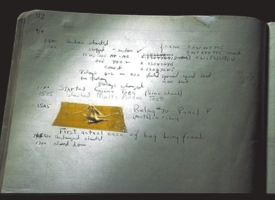- Diagnosis: Find the cause from the symptoms
- Debugging: Diagnosis of a engineered system, usually a computer.
- Use of “bug” for malfunction predates the computer.
Edison
used it, and has
earlier
origins.
- Moth found in the Mark II.
- Relevant properties of a computer.
- Precision, e.g., letter O and digit 0.
- Literal operation.
- A computer cannot know what you meant.
- No “common sense”.
- Consistent: Do the same thing every time.
- Usually. Exceptions mean the behavior depends one something
you don't know about.
- Looks like a random failure.
- Sources of trouble.
- Bad input data.
- Bad instruction: An error in the program.
- Debugging steps.
- Reproduce the error: Try to be sure what causes the behavior.
- Be precise about what is wrong.
- Eliminate obvious errors: “Is is plugged in?”
- Divide into parts, and test separately.
- Predict the results of your tests, and see if actual behavior agrees.
- If you reach a dead end, start over. Try more and better.
- Testing a Program.
- Test plan.
- Consider each required behavior.
- Plan actions to demonstrate that behavior under all relevant
circumstances.
- Note the expected correct response.
- Black box testing: Choose tests based on specification.
- White box testing: Choose tests based on program code.
